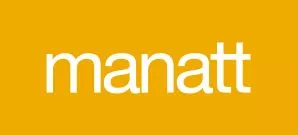- with readers working within the Retail & Leisure industries
- within Media, Telecoms, IT and Entertainment topic(s)
- with readers working within the Retail & Leisure industries
- within Real Estate and Construction and Immigration topic(s)
On Friday, District Court Judge Claudia Wilken of the Northern District of California approved a landmark settlement in In re College Athlete NIL Litigation (the “House Settlement”). The settlement stems from 15 years of litigation, multiple antitrust class action lawsuits and appeals reaching the U.S. Supreme Court.
The House Settlement
Made between a class of Division I (D-1) college athletes and the National Collegiate Athletic Association (NCAA) and its five major conferences, the Big Ten Conference, Big 12 Conference, Pacific 12 Conference, Southeastern Conference, and Atlantic Coast Conference (collectively, the “Power Five”)—the House Settlement secures roughly $2.8 billion in damages for college athletes that were denied compensation for their name, image and likeness (NIL) and athletic performance.
It also reflects the latest major development in college athletics by permitting D-1 schools to share their future annual athletics revenue with college athletes and enables universities to directly compensate and share revenue with their athletes. Specifically, the settlement agreement now permits all D-1 universities to share up to 22% of the Power Five's (including Notre Dame) average athletic revenue next season.1 This, in turn, presents new opportunities and challenges for universities and college athletes, as both continue to wade through the fast evolving and uncharted waters of NIL.
The House Settlementalso lifts historic restrictions on the number of scholarships that universities can award, replacing them with strict roster limits. For example, D-1 Men's Gymnastics teams that were previously limited to offering less than five scholarships annually with no roster limits may now offer 20 scholarships but cannot have more than 20 athletes on the roster. Many student athletes objected to earlier versions of the settlement agreement because new roster limits would force roster cuts. In response, the final settlement agreement now includes an exception for athletes that were or would have been removed from the 2025–26 academic year rosters, due to the implementation of roster limits.
As approved, the roster limits provided under the House Settlement will not apply to: (1) any athlete who was on a D-1 roster during the 2024–25 academic year, but was or would have been removed due to the roster limits and (2) to any initial enrollee (i.e., high school student athlete) who was recruited to be or assured they would be on a D-1 roster for the 2025–26 academic year, but was or would have been removed due to the roster limits. Athletes falling within either of these two categories (i.e., the “Designated Student Athletes”) do not count towards the school's roster limits for the remainder of the athlete's D-1 eligibility (even if they transfer or enroll in another school).2
The Post-House NCAA Landscape
Anticipating the approval of this landmark settlement agreement, the NCAA announced in April that it had already “conditionally approve[d]” House Settlement related rules “that would take effect if the settlement is ultimately approved by the court.” According to the NCAA, the change would eliminate more than 150 rules “to allow for schools to provide additional benefits to student-athletes under the settlement.” The new NCAA rules affirm D-1 institutions' right to provide direct financial payments to student-athletes, including for use of a student-athlete's name, image and likeness and set the revenue sharing cap for the 2025–2026 academic year at $20.5 million. These rule changes enable NCAA institutions to follow the terms of the settlement and begin paying student-athletes on July 1.
To ensure compliance with the terms of the settlement agreement, the NCAA and Power Five have formed a “Settlement Implementation Committee,” comprised of two athletic directors from each of the Power Five conferences, that will be tasked with overseeing the systems and processes to be established and to “bring[] order to chaos amid the current realities of college sports.” In a statement issued by the NCAA, the committee will oversee four key components of the settlement:
- Drafting new rules and clarifying existing rules to facilitate consistent compliance with all aspects of the settlement.
- Developing a digital platform for the reporting and measurement of payments made to student-athletes by their institutions to ensure compliance with the cap set forth in the proposed settlement.
- Creating a system to ensure that third-party name, image and likeness deals entered into with student-athletes are legitimate deals that will use the student-athlete's NIL to advance a valid business purpose.
- Forming a new entity to enforce these rules with an emphasis on efficient investigative procedures, timely decision-making, appropriate penalties, and ensuring accountability for bad actors.
As part of these stated objectives, the committee retained LBi Software to develop a cap management and reporting platform—similar to the salary monitoring systems in place with the MLB, NWSL, NBA and other leagues.
The Power Five separately created a new, independent entity—the College Sports Commission LLC (the “Commission”)—to serve as the enforcement entity that will track and evaluate NIL deals. This enforcement entity will have the power to alter or reject NIL deals that it deems overvalued or determines are a pay-for-play agreement disguised as an NIL deal. The goal of the Commission is to prevent schools from circumventing the annual sharing cap and oversee deals made with student athletes. For instance, the Commission will be tasked with reviewing third-party deals worth $600 or more, to ensure that athletes are receiving “fair market value.” According to the NCAA, the Commission “will use the system to help it evaluate whether these deals are within a reasonable range of compensation and made with the purpose of using a student-athlete's NIL to advance a valid business purpose, as outlined in the proposed settlement.”
Notably, the House Settlement also establishes a dispute resolution process in which neutral arbitrators will be appointed to resolve any disputes relating to, among other things, penalties imposed by the new enforcement agency. Under the settlement agreement, any such disputes are to be arbitrated on an expedited basis, and within 45 days after commencement of proceedings.
Key Takeaways
The landscape of college athletics continues to change rapidly, requiring colleges and universities to remain informed about and plan for the dynamic rules and regulations governing NIL. The House Settlement reinforces this point—especially with the creation of an enforcement agency and expedited dispute resolution process. While the specifics of the clearinghouse system and process remain unknown, universities and institutions should take proactive steps to ensure compliance and minimize risk of loss. Below are a few actions for institutions to consider:
- Compliance Policies and Procedures: Establish internal policies and procedures to ensure the institution's practices conform with the requirements set forth in the House Settlement and those of the clearinghouse entity. To the extent not already in place, universities and institutions should consider establishing an athletics compliance position that is responsible for, among other things, overseeing implementation and compliance with policies and procedures and routinely reviewing any changes to NIL rules and regulations. Alternatively, universities and institutions may wish to work with outside advisors to guide them through this process. Given the accelerated arbitration schedule, universities and institutions should have a protocol in place in the event an arbitration is commenced, which should address, among other things, the preservation of documents and when to consult with outside counsel.
- Standard Deal Documents: Universities and institutions should develop standardized revenue-sharing agreements that are consistent with the terms of the House Settlement and documents that can be utilized for third-party NIL deals.
- College Athlete and Staff Trainings: Trainings and presentations should be developed to educate student athletes and staff on the House Settlement's requirements and current rules and regulations surrounding NIL, including forthcoming NIL reporting requirements. Periodic auditing should also be considered to ensure compliance with policies.
- Audits: Periodic review and audits of NIL and revenue-sharing deals should be conducted to ensure compliance with disclosure requirements and the accuracy of the same.
Conclusion
The House Settlement presents new developments in the evolving college athletics landscape, and one development may open new opportunities for athletic programs and college athletes to grow and flourish as prior NCAA restrictions are lifted. That said, there is no one approach to addressing the ongoing changes to the college athletics landscape and NIL, and universities and institutions should develop plans and policies that best align with their particular mission, needs and obligations. The Manatt team, comprised of esteemed professionals in the entertainment and sports industries, possesses exceptional experience in guiding universities, collectives and college athletes through these uncharted territories. We are adept at devising tailored strategies and plans that address the specific requirements of each client.
Footnotes
1. In re College Athlete NIL Litigation, Case No. 4:20-cv-03919, ECF No. 796-2 (N.D. Cal.).
2. In re College Athlete NIL Litigation, Case No. 4:20-cv-03919, ECF No. 980-2 (N.D. Cal.).
The content of this article is intended to provide a general guide to the subject matter. Specialist advice should be sought about your specific circumstances.





